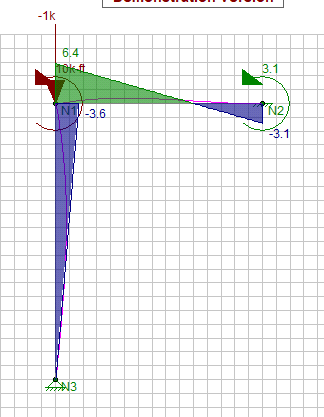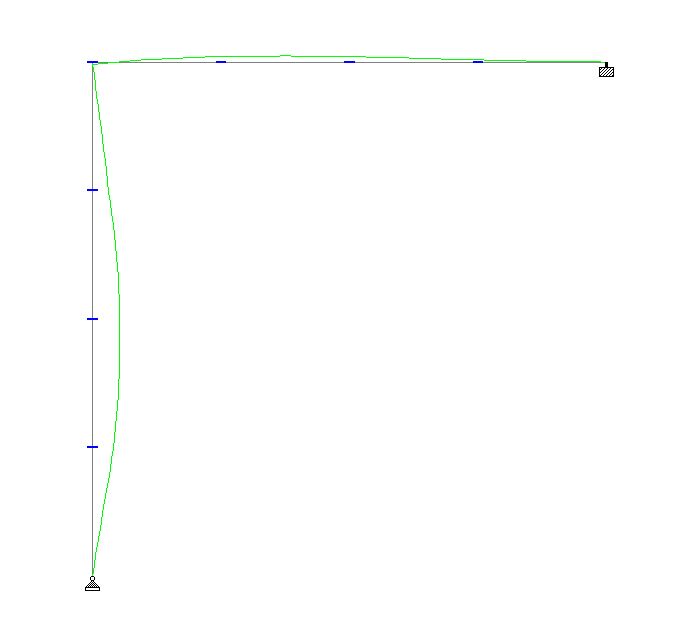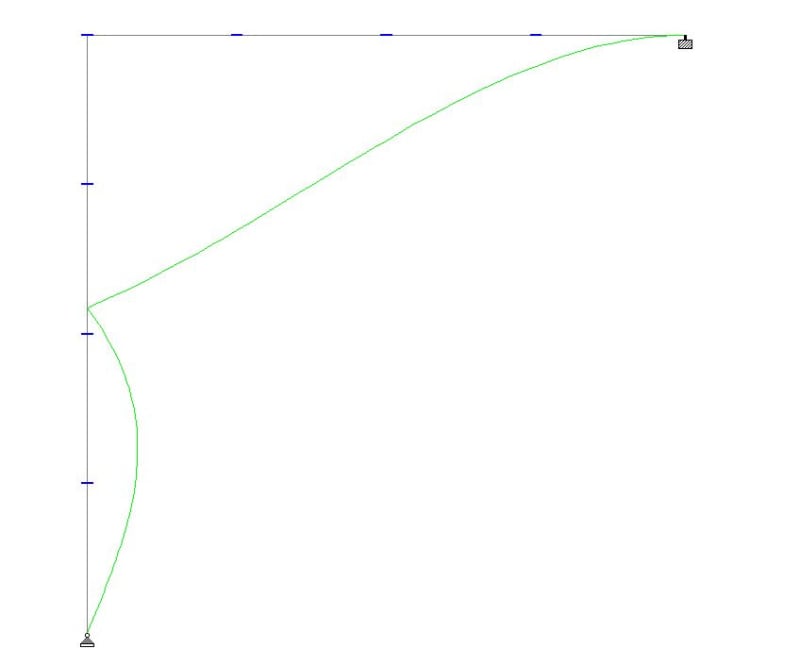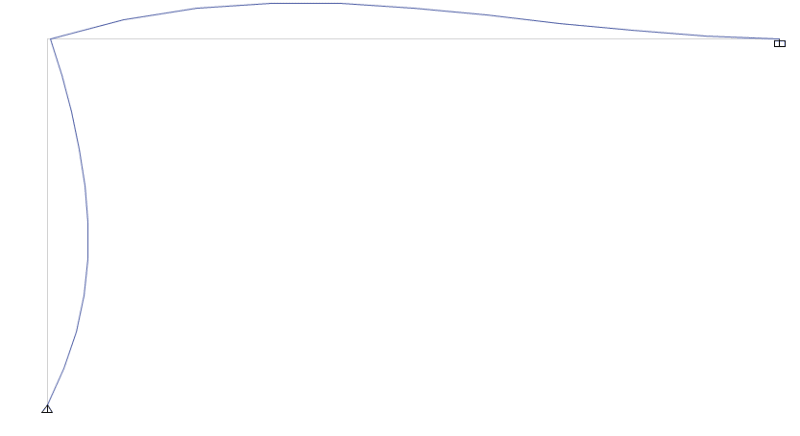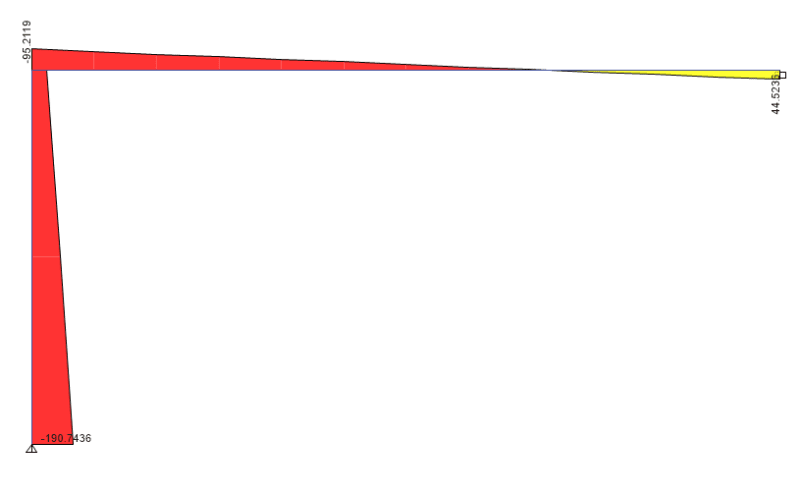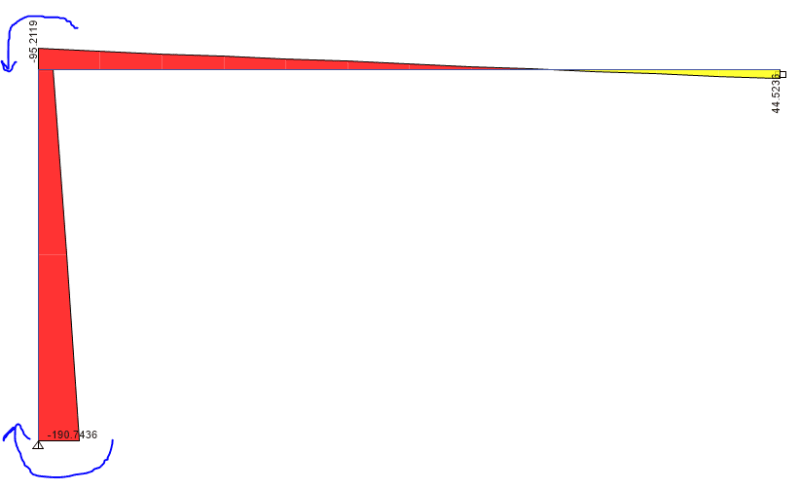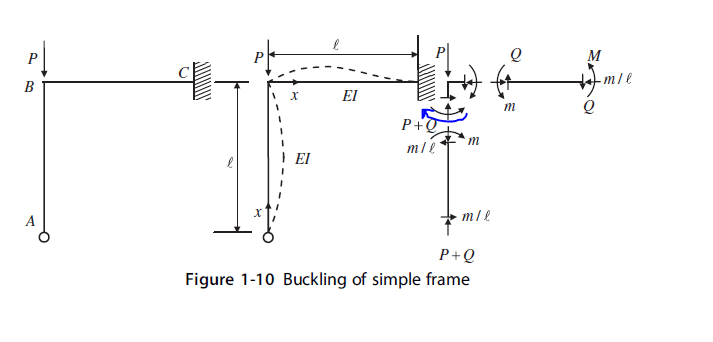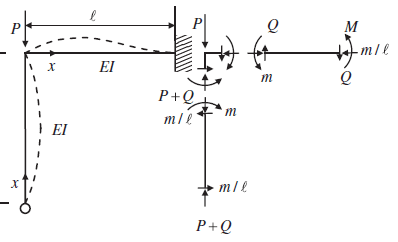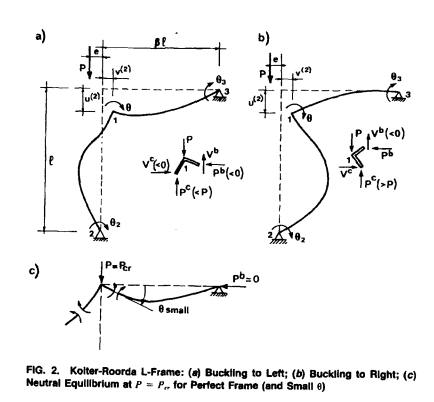Theres something odd about your analysis for sure. Maybe try replicate the buckling result in another program.
Do you have a moment applied at the moment joint, that might explain the odd moment diagram.
I'm not sure if the moment diagram from etabs is that relevant as you are simply working out the critical axial buckling load under an applied axial load, is etabs even capable of doing a flexural torsional buckling analysis (i.e. inelastic/elastic buckling under moment?). applied moment does not affect the determination of the effective axial buckling length (i.e. consider eulers equation P_crit=pi^2EI/(kL^2))
The moment doesn't really factor into it, yes its a by-product of the fact that it buckled under axial load that some moment will be generated as it collapses. But it's a little irrelevant isn't it, because it occurs after it has buckled?
It's not like you're taking your moment and axial load from this analysis and checking the member(s) for this, the member buckled, it failed, end of story.... all you can extract is the critical axial buckling load, which then feeds into your critical buckling stress which can be used directly with your codes column buckling curves to account for second order effects (residual stresses, member imperfections, etc).
[never done a buckling analysis in etabs so not familiar with the output it spits out, or even what type of buckling analysis it is actually capable of doing]

